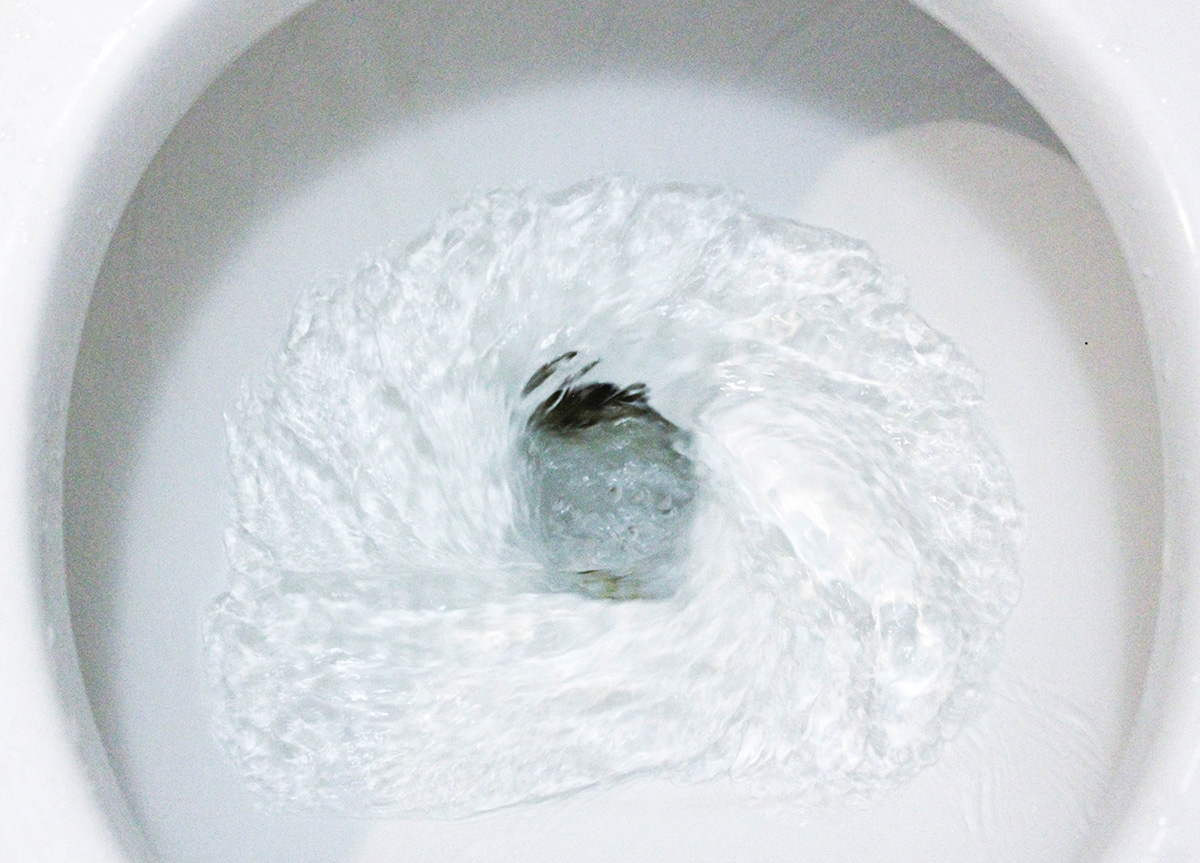Seen and heard
Weird and wonderful stories from the world of physics

Feeling flush
We assume you always close the toilet lid before flushing – but if you don’t, here’s a very good reason to do so. Fluid-dynamicists from Southeast University in Nanjing, China, have discovered that as water pours into a toilet bowl it creates vortices that can propel droplets to a height of nearly 1 m. (Phys. Fluids 32 065107). These droplets are so small they can float in the air for more than a minute and therefore could be inhaled or even settle onto other surfaces further away from the bowl. The researchers say that their “alarming results” could help to tackle the spread of SARS-CoV-2 – the virus behind the COVID-19 pandemic. It is known to transmit via faecal matter, prompting the researchers to suggest that all public toilets be designed so that they don’t flush unless the lid is firmly closed. But wouldn’t the next person have to touch the lid to lift it again?
Grand designs
In more lavatory news, NASA has asked the public to help design a toilet that astronauts can use when they are back on the Moon – currently scheduled for the mid-2020s. Space toilets are already deployed on the International Space Station, but they are designed for a microgravity environment and not optimized for the stronger gravitational pull on the Moon. NASA apparently wants to cast the net beyond just traditional aerospace engineering to “approach the problem with a different mindset”. Given that space is at a premium, NASA wants the designs to focus on efficiency. Ideas need to be submitted by 17 August – so no time for sitting around – with the three winning designs set to share a cool $35,000. Just remember to incorporate an automated lid-closing mechanism.
The bottom line
Researchers have revisited a classic problem in the animal kingdom: why can penguins poo such large distances? In 2003 researchers from Germany, Finland and Hungary – who bagged an IgNobel prize in 2005 for their efforts – found that some penguins can fire their excreta as far as 40 cm, allowing these aquatic birds to continue to nurture their eggs without sitting in a sea of faeces. Now, researchers in Japan have modified this pooping model to calculate the maximum distance that a penguin could manage to fling their dung when at a certain height (arXiv:2007.00926). Thanks to the penguins’ “strong rectal pressure”, which they calculate to be higher than previous work, the team finds that the maximum distance is 1.34 m. The team says this information could be “useful” for zookeepers, who would know just how far away to stand to avoid getting hit by the firing faeces. So next time you visit the penguin enclosure – do keep your faecal distancing.

Life in the universe
Breakthrough Listen is an initiative searching for evidence of technological life by surveying one million nearby stars in the Milky Way as well as 100 nearby galaxies. With no definitive evidence of life found to date, it has now expanded its remit to include 700 distinct objects belonging to a catalogue of “Exotica”. The idea is to go beyond the usual targets of stars that could have Earth-like planets and look at “one of everything” in the observable universe. The new targets range from comets to galaxies as well as some of the most rare and violent celestial phenomena. Examples include Tabby’s Star, which has a bizarre dimming behaviour, as well as the interstellar object ‘Oumuamua that entered our solar system in 2017. In a related development, physicists Steven Woodling and Dominik Czernia have released an Alien Civilization Calculator. Based on an updated version of the famous Drake equation, it can be used to deduce how many intelligent lifeforms there could be in the universe. Using the latest astrophysical data, the pair estimate the presence of 36 such civilizations, giving Breakthrough Listen at least something to aim for.